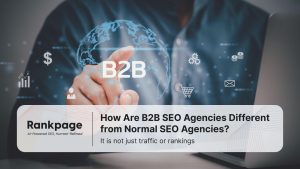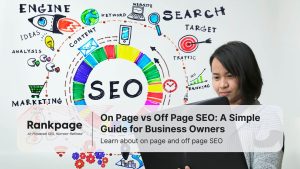Key Takeaways
- SEO and web design are interdependent, separating them leads to missed opportunities and wasted effort.
- Integrating SEO early ensures site architecture, meta data, and content layout support discoverability.
- Design choices (speed, navigation, responsiveness) directly influence ranking signals and user retention.
- A holistic team approach (designer + SEO) reduces friction, rework, and misalignment.
- Continuous testing and iteration (UX + SEO metrics) keep the site both user-friendly and search-strong.
SEO and web design must be treated as a unified process, not sequential or disjointed tasks. Doing so ensures your website is both discoverable and usable, maximizing ROI on both design and marketing.
When your designer and SEO agency work independently, conflicts arise. Beautiful layouts become SEO liabilities, and SEO-heavy pages turn into clunky user experience (UX). In this post you’ll see how the two disciplines overlap, where integration matters most, and how to execute a merged workflow that yields better results.
Table of Contents
Why Treating SEO and Design as Separate Silos Hurts You
1. Missed synergy in early planning
If SEO is brought in after design, critical structural and content decisions have already been made. The design may lack the flexibility for ideal URL structure, internal linking, or content depth.
Conversely, if SEO dictates too heavily without design input, you may end up with pages that “check boxes” but feel bland or hard to use. The balance is only struck when both functions align early.
2. Design influences ranking signals
Many aspects of design are not mere aesthetics, they become part of your SEO foundation:
- Site speed / performance: Heavy images, unoptimized CSS/JS, render-blocking resources, slow load times and hurt rankings.
- Responsive / mobile design: Google uses mobile-first indexing, meaning your mobile version is prioritized.
- Navigation & architecture: A shallow, logical hierarchy makes crawling easier, spreads link equity properly, and reduces “orphaned” pages.
- Semantic HTML / header structure: Proper use of H1, H2, H3, alt attributes, schema markup all demand cooperation between content, SEO, and design.
- Accessibility & progressive enhancement: Ensuring basic content loads without heavy scripting helps both users and search bots.
When design hides or complicates content or slows performance, SEO suffers. When SEO forces content into odd places, UX suffers.
3. User behaviour & engagement are SEO signals too
Search engines increasingly consider user-centric metrics (bounce rate, dwell time, CTR) as proxies for “usefulness.” A design that frustrates users, hides content, or is confusing will undercut those signals.
Thus, the design must facilitate content exploration, intuitive layout, and calls to action, not just “looking pretty.”
4. Rework, inefficiency, and cost overruns
When design and SEO are decoupled, changes late in the project are inevitable. You’ll likely need:
- redesign layouts to accommodate longer content
- rework navigation or menu structure
- fix template code to support schema / meta tags
- re-optimize assets or HTML elements
That means extra cost, delays, and friction with your team or vendor. A collaborative, concurrent approach avoids this.
Where Integration Matters Most: 6 Key Areas
These are the most important points where your SEO and design teams need to work closely, right from the start.
Touchpoint | Why It Matters | What to Do Together |
Site Structure & URLs | SEO needs keyword-focused pages, design needs easy navigation. | Plan your sitemap and menus based on keyword groups before any mockups. |
Wireframes & Layout | Designers like clean layouts, but SEO needs space for content. | Include real content sections (headlines, paragraphs, buttons) in your early design sketches. |
Images & Media | Big images can slow your site, and missing alt text hurts SEO. | Use lightweight images with descriptive filenames and proper alt tags. |
Meta Tags & Social Sharing (OG) | Titles and descriptions impact search results and social sharing. | Make sure each page template includes editable meta titles and descriptions. |
Structured Data (Schema) | Helps Google show rich snippets like FAQs or product info. | Add structured sections in your design (for FAQs, reviews, products). |
Testing & Ongoing Optimisation | You won’t know what works until real users visit. | After launch, track metrics like speed, bounce rate, and clicks, then improve the layout or content accordingly. |
How to Structure Your Team and Workflow
You’ve known what needs collaboration, here’s how to plan the actual process step by step.
Blending SEO and design isn’t about hiring more people, it’s about working smarter. Here’s a simple way to plan it:
Start Together
Get your SEO person, designer, and content writer in the same room. Share your goals, keywords, and who you’re building the site for.Plan the Pages
List all the pages you need (like Home, About, Services, Blog), and decide which keywords each page should focus on. Build a simple sitemap from this.Sketch with Content in Mind
Design wireframes (basic layouts) that include actual content sections, headings, short paragraphs, images, and call-to-action buttons. Avoid lorem ipsum.Build a Basic Prototype
Turn your wireframes into a working webpage (even if it’s rough). Test how fast it loads and how it works on mobile.Set Up SEO Tools in the Templates
Make sure every page template includes spots for SEO basics: title tags, meta descriptions, image alt tags, and structured data (like FAQ or product info).Test Before Launch
Check your site for speed, mobile-friendliness, broken links, and make sure search engines can crawl it properly. Use real content, not placeholders.Go Live and Watch the Data
After launch, track how people use your site: Are they staying? Are they clicking? Are they converting? Use that info to improve the layout or wording.Keep Tweaking
SEO and design aren’t “set and forget.” Update your content, images, and structure based on what’s working (or not).
Local Considerations (Malaysia / Southeast Asia)
When building a website for users in Malaysia or nearby regions, here are a few things to keep in mind:
- Multiple Languages: If your site is in English and Malay (or others), make sure it’s easy to switch between languages and avoid repeating the same content on different pages.
- Slow Internet Connections: Many users are on mobile data. Use smaller image sizes, compress files, and enable lazy loading so the site loads faster.
- Cultural Design Preferences: Use colours, images, and layout styles that feel local and familiar, but don’t sacrifice readability or usability.
- Local Search Features: Include important business info like your address, Google Map location, and structured data (like opening hours) so you show up in local searches.
Common Objections & And How to Handle Them
“Our designer is already working on it, we’ll do SEO later.”
That usually means more work later: redesigns, coding changes, or fixing layout issues, all of which cost more.
“Our site is small, do we really need all this?”
Yes. Even a 5-page site needs proper structure and SEO basics. Fixing it later is harder and more expensive.
“SEO people want too much content, our design will look messy.”
Avoid this by planning together. Use real content in your designs from the start so everyone knows what fits.
“We don’t have time to keep updating the site.”
Then launch with a solid, flexible base, and set aside time for small improvements later. It’s better than rushing and fixing mistakes.
Conclusion: SEO and Web Design Work Best When Built Together
Separating SEO and web design often leads to unnecessary rework, missed growth opportunities, and a website that doesn’t perform. When you plan them together, you build a site that not only looks good but ranks well and delivers results.
In 2025, performance, usability, and search visibility go hand-in-hand. If you’re planning a new site or revamp, talk to us! We build websites designed to rank and convert.
Disclaimer: This content is for general informational purposes only and does not constitute business, marketing, or legal advice. SEO strategies and search engine algorithms evolve frequently. Always consult a qualified digital marketing professional or SEO expert familiar with Malaysia’s market before making decisions.
Frequently Asked Questions About SEO and Web Design Integration
What comes first: SEO or web design?
Neither should come first. They should start together. Begin with keyword research and user intent, then design wireframes that support both SEO goals and UX.
Can I add SEO after my website is designed?
Yes, but it often requires structural changes and rework. Integrating SEO from the start is more efficient and cost-effective.
Do visual designs affect Google rankings?
Indirectly, yes. Design impacts load speed, mobile responsiveness, and user experience, all of which are ranking signals.
Why do designers and SEO teams clash?
SEO prioritizes content and structure, designers prioritize layout and aesthetics. Joint planning ensures both goals align.
How do I check if my current site is SEO-friendly?
Run technical SEO audits, test speed via PageSpeed Insights, and review metadata, headings, and mobile usability.
Can a simple business website skip all this?
Even small sites benefit from proper URL structure, responsive design, and search-optimized content. It builds a strong base for growth.





